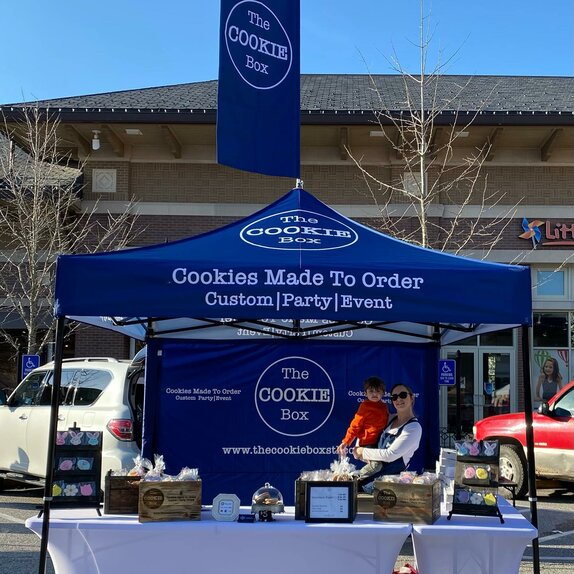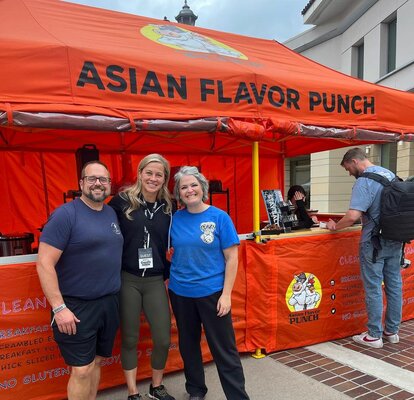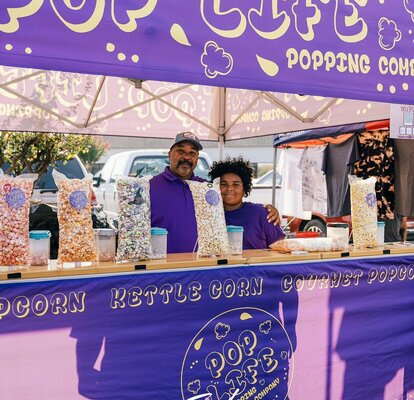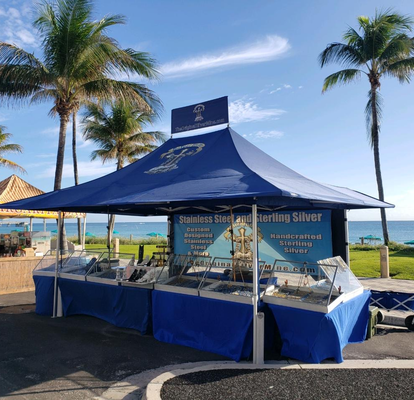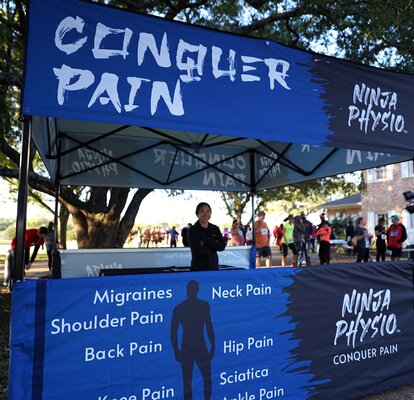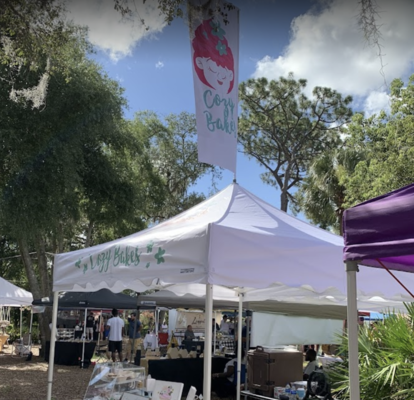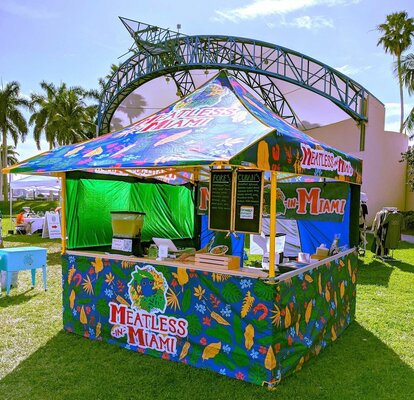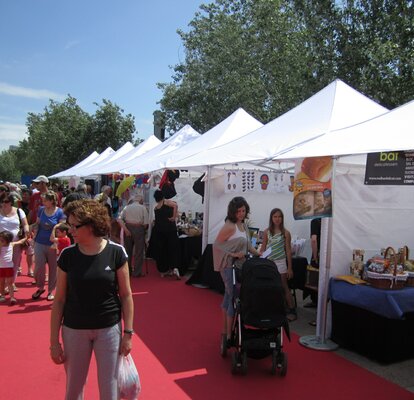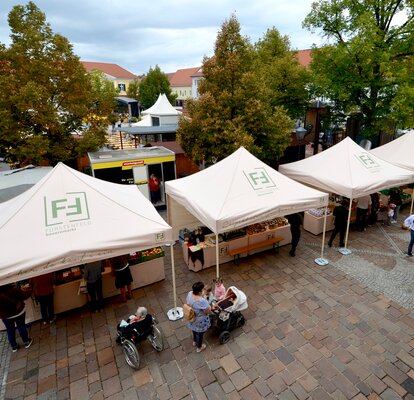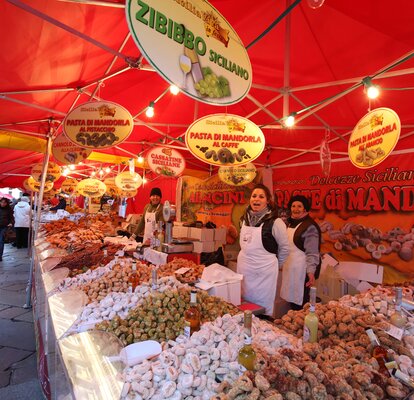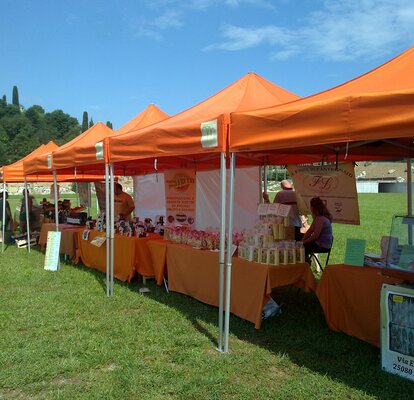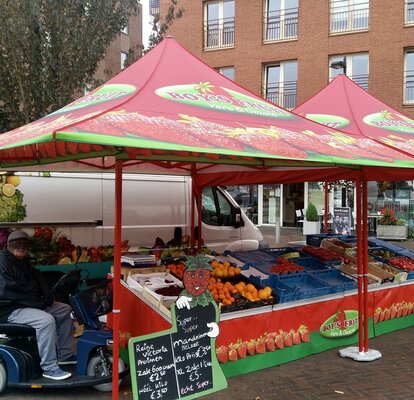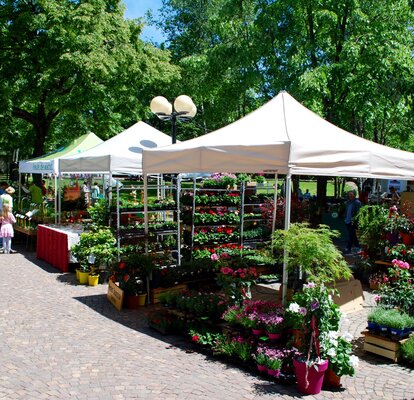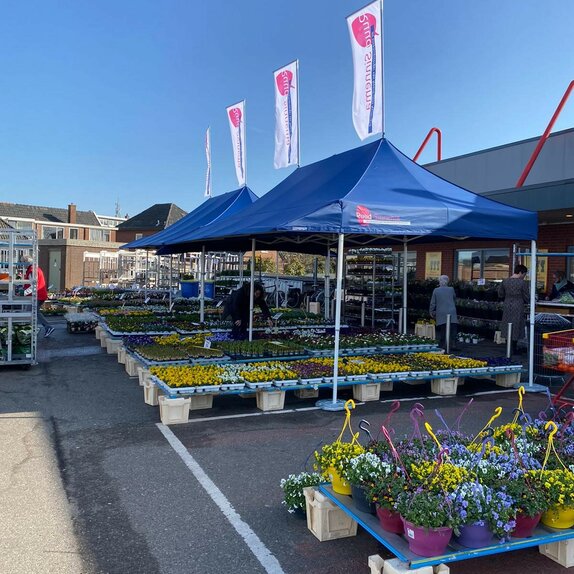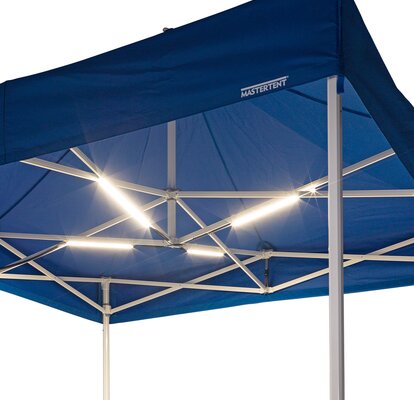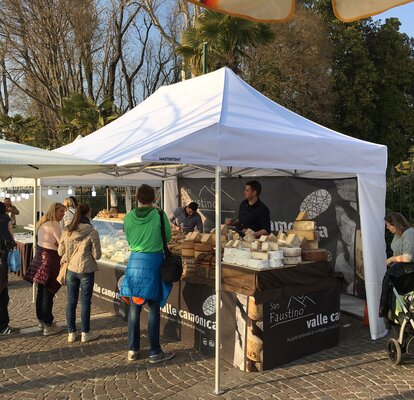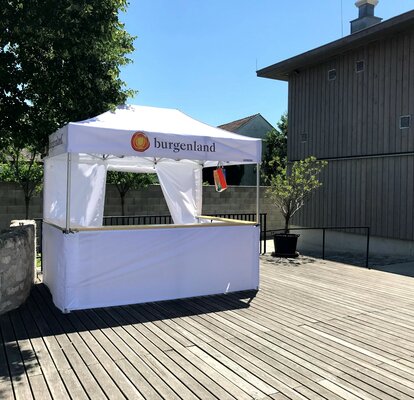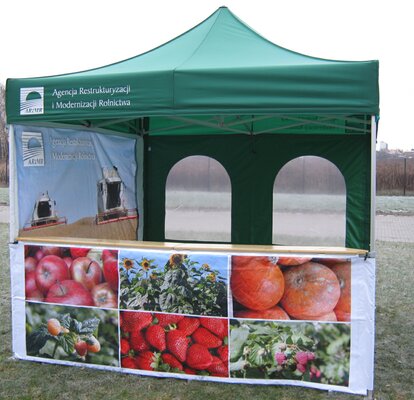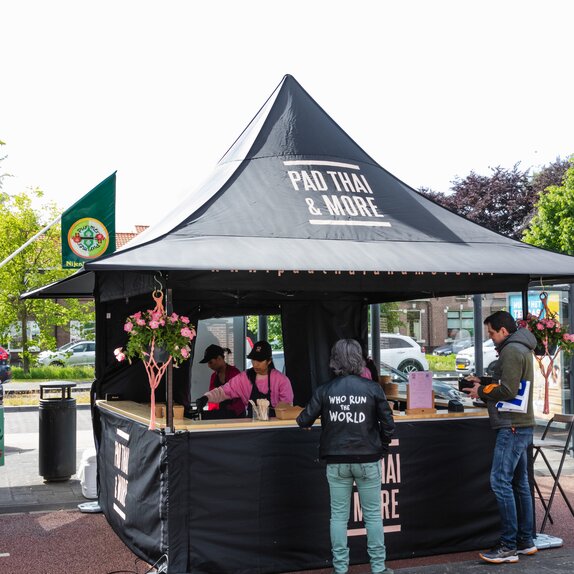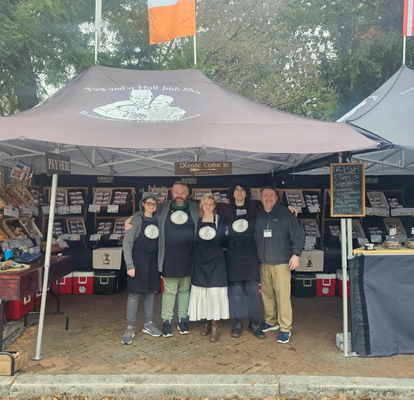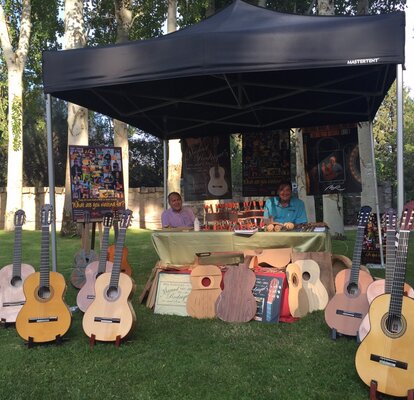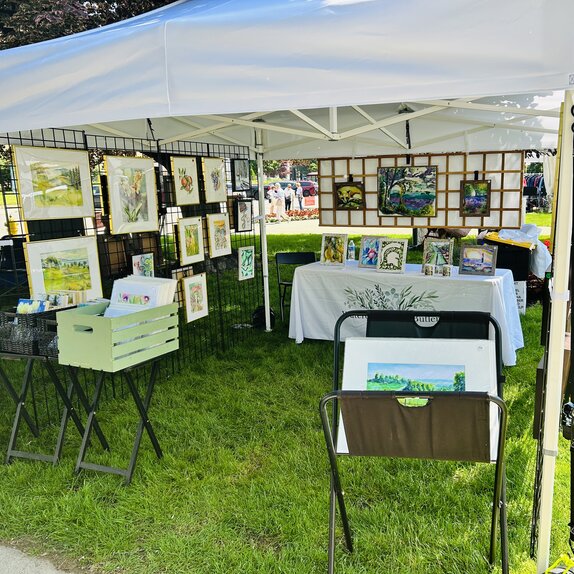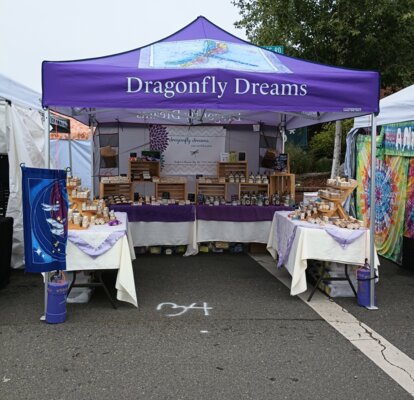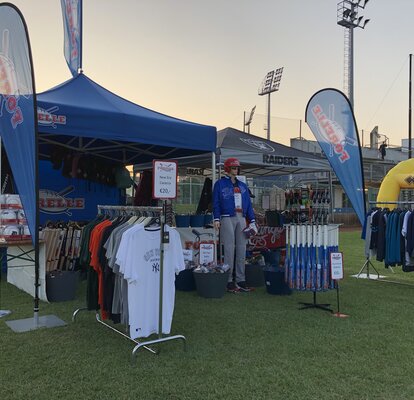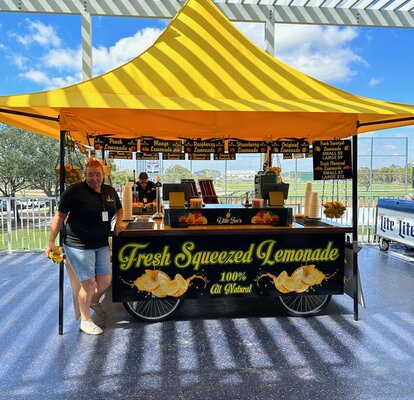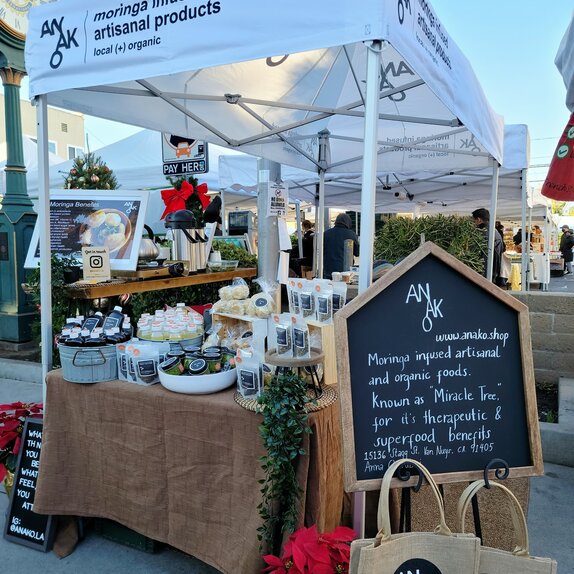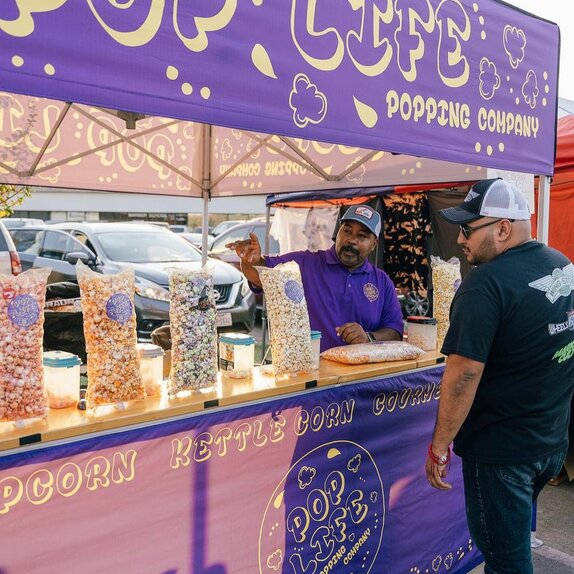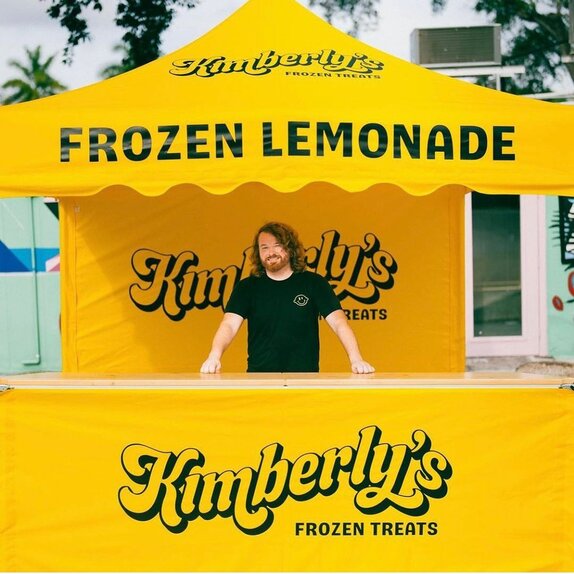2. Layout
Customers might be approaching from one or more directions depending on the market. Be thoughtful about how you set up your tent to accommodate the flow of visitors. For example, consider: Will customers enter your tent? Or, will you serve them from a counter?
Various layouts have advantages for different types of merchandise. A counter-style setup puts products front and center for customers to see and purchase quickly, while also allowing space for backstock or storage. Alternatively, a U-shaped or I-shaped layout offers a more immersive experience, with expanded product display areas.
The right tent layout for your business also depends on the surrounding vendors. For example, side-by-side booths will restrict customers from approaching from the side of your tent. Conversely, a multi-tent setup featuring aisles between tents may be appropriate for large-scale applications. Mastertent sidewalls, secured with heavy-duty velcro, offer the flexibility to adapt your setup from market to market.

